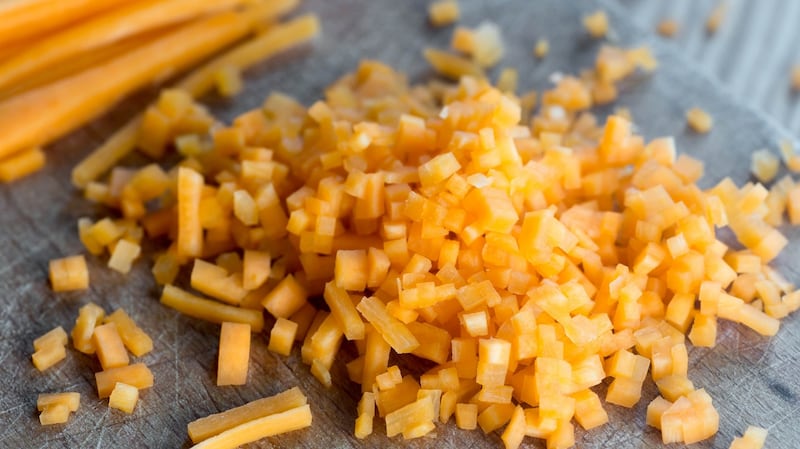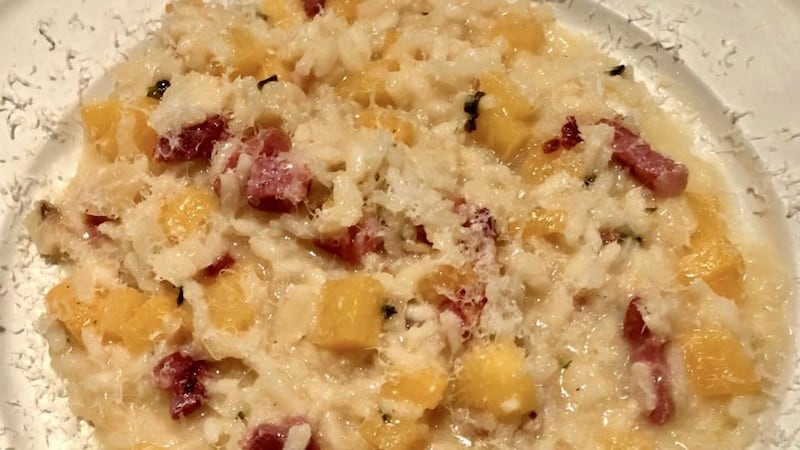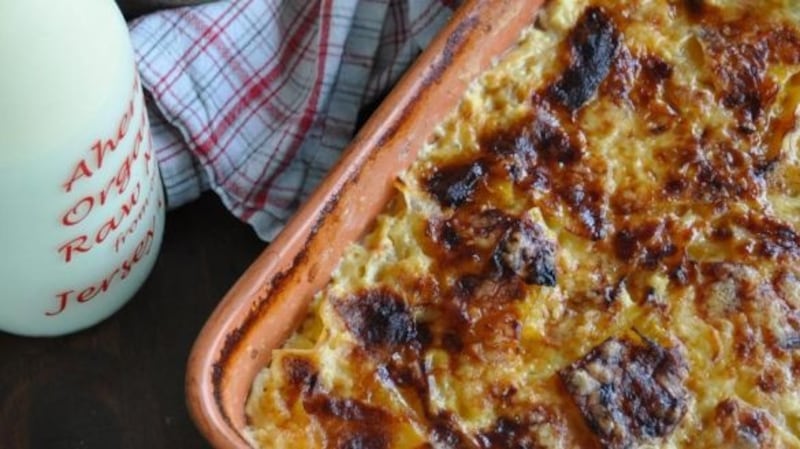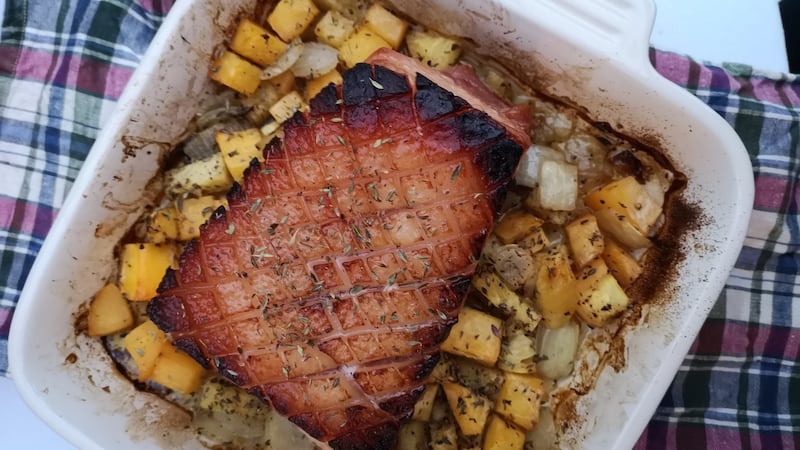First things first. Is it a turnip or a swede? That largely depends on where in the world you are. In Ireland, the chunky, purple and orange root vegetables are commonly known as turnips, and in Scotland they are neeps. In the US, and in France too, they are rutabaga.
Infact, all three are swedes (Brassica napobrassica), while turnip (Brassica rapa) is the smaller, white fleshed root, popular with French diners in particular and a traditional component of the classic spring lamb stew, navarin d'agneau.
Thought to have originated in either Scandinavia or Russia, swedes are a good source of fibre, as well as vitamins A, C and folic acid. They keep well, perhaps thanks to their tough outer skin, which can make preparing them for the pot a bit of a pain.


Shame, then, we don’t have any vegetable butchers here, to do the hard work. I first saw this phenomenon – where you pick out your veg and fruit and drop them off at a counter to have them peeled, pared and prepared to your exact specifications – at the Italian culinary marketplace, Eataly, in New York. At the end of last year, Harrods in London followed suit, with a dedicated vegetable butchery in the newly extended fresh food hall, where customers can have their courgettes spiralised or their carrots cut to perfect brunoise.
However, turnips, the Irish ones that is, are not to everyone’s taste, in fact they are firmly in the love it or hate it category.
Chef and TV presenter Catherine Fulvio came out firmly in the hate camp when, in the series three finale of Lords and Ladles on RTÉ1, turnips glacé featured on the dessert menu at Drishane House in Cork, the former home of writer Edith Somerville.
Sugar glazing failed to disguise the "boiled turnip smell" sufficiently for Fulvio to consider the root a sweet treat. But another TV chef, Gary O'Hanlon of The Restaurant, would beg to differ, though his candied turnips are intended as a side dish for a savoury meal, roast chicken, for example.
His recipe goes thus: 1 turnip peeled and cubed, seasoned with fine sea salt and white pepper, covered with thin slices of butter and a generous drizzle of honey. Roast at 180 degrees Celsius, covered, for 25-30 minutes, then stir and cook at 19 degrees,uncovered, until glazed and cooked through.

Although a humble vegetable, restaurants do not shy away from exploiting its potential. At Beaufield Mews in Stillorgan, Co Dublin, the turnip bake is a favourite with customers. Julie Cox, managing director, says the secret to this one is to grate the root finely – "It should look like Cheddar cheese" – before sweating it off in butter, seasoning, mixing in some cream, topping with breadcrumbs and thyme, and baking in a hot oven until golden on top.
“Alternatively, we make a granola topping from pistachios, walnuts, hazelnuts and pecans, roasting them and then mixing them up with oats and glucose syrup, salt and pepper, so that it creates a nice crunch,” she says.
I've been making oven chips with turnips for the past couple of winters, and they really are good, though they do take quite a while to cook. There is a recipe below from Conor Spacey, head chef at FoodSpace.

But turnip risotto was a new one on me. Until I made Paul Flynn’s version, with smoked bacon, sage, mature Coolea cheese – and a whole can of cider. Give it a go, it’s really excellent.
Paul Flynn’s turnip and smoked bacon risotto with sage and Coolea cheese.
“This something I do a lot, taking something utterly Italian and making it our own. In cooking it’s the technique that’s important and once you have mastered that, you can swap the ingredients around almost ad infinitum, the only caveat is that it has to make sense. If it sounds odd, it probably is, so think twice.
There is no need to continually stir for the first half of cooking, just mind it towards the second half. It is possible to have a life and make a risotto.”
Ingredients
Serves 6
400g risotto rice.
Half a medium turnip, peeled and cut into dice
1.2 litres chicken stock, cube will do
2 tbsp butter
1 large onion, peeled and finely diced
1 can of cider
125g smoked bacon lardons
A sprig of sage
150g Coolea cheese, grated
Salt and black pepper
Method
Sweat your onion and sage gently in the butter for 15 minutes (keep a lid on the pot for best effect). While you are doing this, cook the diced turnip in a pan of simmering water for around 10 minutes, until slightly softened.
Add the bacon to the onion and sage, cook for another 10 minutes.
Meanwhile heat the stock.
Add the rice to the onions and stir into the buttery juices, then add the cider and the turnip. Add half the stock to the pot and bring to a gentle simmer, stirring occasionally.
When the stock is nearly absorbed add more stock bit by bit until the rice has just a slight bite. This will take about 20 minutes.
Stir in the cheese and a little extra butter. Season and serve on warm plates. Remember the rice needs to be viscous not stiff.

Lilly Higgins’s turnip gratin
Ingredients
Serves six
1 large turnip or 2 small, peeled
2 cloves garlic, crushed
1 pint milk, as creamy as possible
2tbs butter
Salt and pepper
300g grated cheese (mature cheddar, Coolea, Gruyère)
Method
Preheat an oven to 180 degrees Celsius. Cut the turnip in half then peel it using a sharp knife. Cut each half in half again, then thinly slice all of the turnip. You could use a food processor or mandoline to do this too.
Gently heat the milk in a medium pan with the crushed garlic. Rub the sides and base of a medium baking dish with butter. Place half of the turnip slices in the dish and season with salt, scatter with half the cheese and pour over half the garlic-infused milk.
Layer the remaining turnip slices on top and season with salt. Pour over the remaining milk – it should just cover the layers of turnip – and bake in the oven for 30 minutes.
Remove from the oven and ensure all of the turnip is submerged in the milk before scattering with the remaining grated cheese. Bake for another 40 minutes until the turnip is soft and the top and edges are golden.

Ali Dunworth’s roast bacon with turnip and pineapple
Ingredients
Serves 3 - 4
1 cured bacon or gammon joint, 700 - 800g, skin on
1 small turnip
1 small pineapple
1 white onion
Dried oregano
Olive oil
Salt and Pepper
Method
Preheat an oven to 200 degrees Celsius. Peel the onion, turnip and pineapple. Then cut them all into chunky, cubes of similar size (discarding the core of the pineapple).
Put them all in a roasting dish. Sprinkle over oregano and a drizzle of olive oil and season with salt and pepper. Mix all together and then spread out, so the bacon can sit on top.
Score the skin on the top of your bacon piece and place your joint in on top of the vegetables.
This goes into your hot oven for 10-15 minutes, to colour and crisp the skin. Then you’ll need to take it out and cover it, very carefully, with kitchen foil. This will stop the skin burning.
Put it back in the oven and bring the temperature down to 180 degrees Celsius and cook for another 40 minutes.
Remove from the oven and leave to rest for 10 minutes or so before serving.
Carve the bacon into chunky slices and serve with a big scoop of the pineapple and turnip.
FoodSpace’s roasted swede wedges and Parmesan
Ingredients
Serves 2
1 large swede, peeled and cut into wedges
1 tbsp olive oil
50g Parmesan (or vegan alternative), grated
1 tbsp freshly chopped rosemary
Knob of butter
2 garlic cloves, peeled
Method
Heat an oven to 220 degrees Celsius. Tip the swede, olive oil, 40g of the Parmesan and the rosemary leaves into a shallow roasting tin. Season and toss well, arranging in one layer.
Sprinkle over the remaining Parmesan and butter, then add the garlic cloves. Roast for 30-35 minutes, turning halfway through cooking, until crisp and golden.
Enjoy these as a great snack with a spicy dip or they make a perfect side with crisp chicken.

















